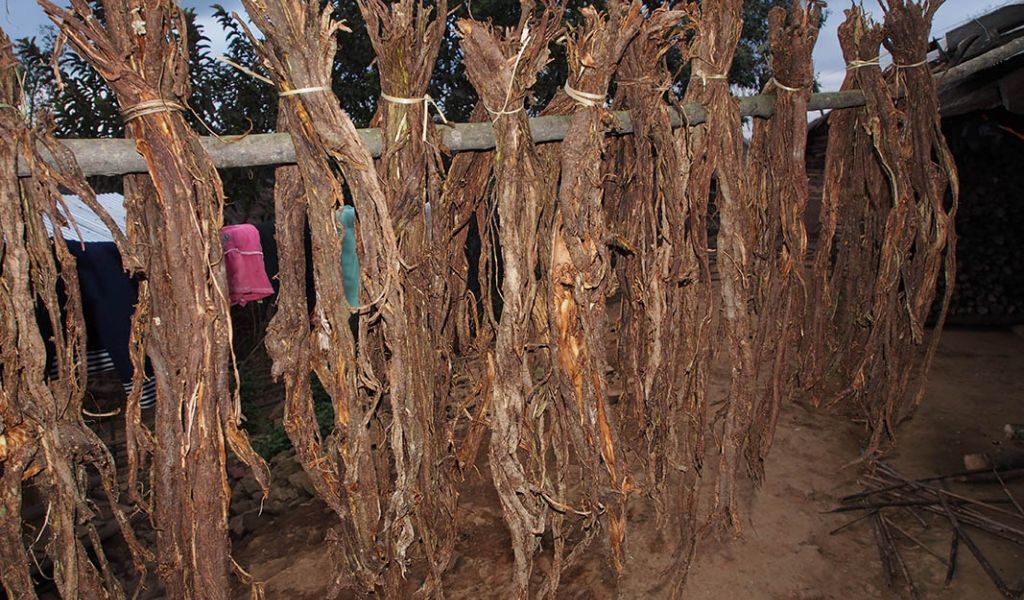ເປືອກເໝືອກ / Malabar Tree
APA 6th ed. ເປືອກເມືອກ / Malabar Tree. (2021, September 13). Retrieved from https://www.phakhaolao.la/kb/0000018
MLA 8th ed. ເປືອກເມືອກ / Malabar Tree. Pha Khao Lao, 13 September 2021, https://www.phakhaolao.la/kb/0000018.
Chicago 17th ed. Pha Khao Lao. 2021. "ເປືອກເມືອກ / Malabar Tree." Published September 13, 2021. https://www.phakhaolao.la/kb/0000018.

Boehmeria glomerulifera var. leioclada W.T.Wang
Boehmeria leiophylla W.T.Wang
Local names: toutiang (Khmu), peuak thiang, nang thiang, nang nyao, saphane, tipti (Phongsali), nang hou (Houa Phanh)
Thai: khai pla
Chinese: shui-moa-pi
Peuak Meuak is a straggling shrub or climber, 1-5 m tall and 0.5-6 cm (larger also, but rare) in DBH, with a thick bark that displays brown marks at irregular intervals over the stem. Mature stems have grey-black bark while younger stems are red, and the bark has sticky sap. The leaves have toothed edges, and are 6-8 x 2.5-4 cm, with a red leafstalk. Inflorescence are tiny white flower clusters.The red fruit is ball-shaped with a single red seed. Taxonomy is still unclear, and there is possibly another Peuak Meuak species: Debregesia longifolia (Burs.f.) Wedd. has more narrow leaves, more contrast between upper/lower leaf blades, slower growth and less glue in the bark. Traders often refuse it (synonyms: B. glomerulifera Miq., Urtica).
Chinese traders report that Peuak Meuak fibres are used to make incense sticks, mosquito repellents and glue. Local villagers use the sap for treating stomach and intestinal complaints. The durable fibres are used instead of nails in house construction, lasting more than ten years.
